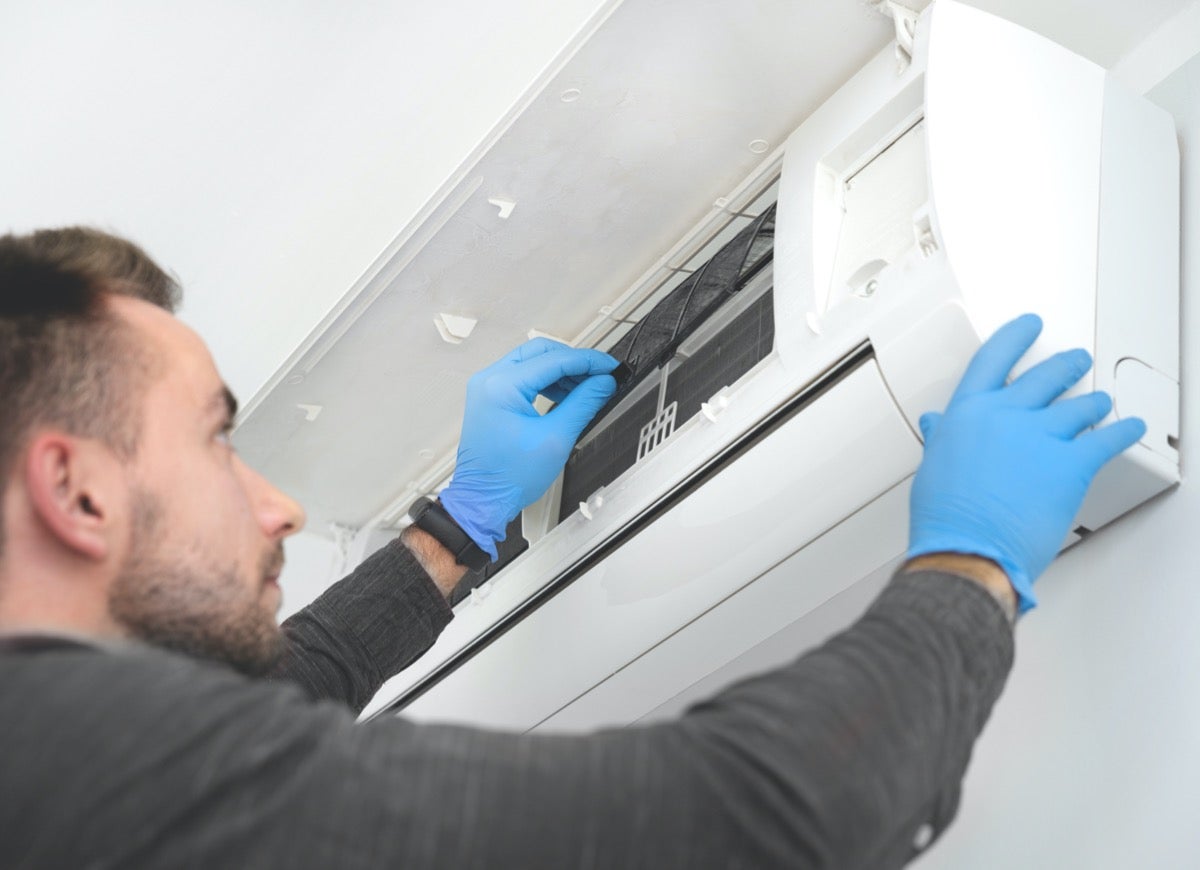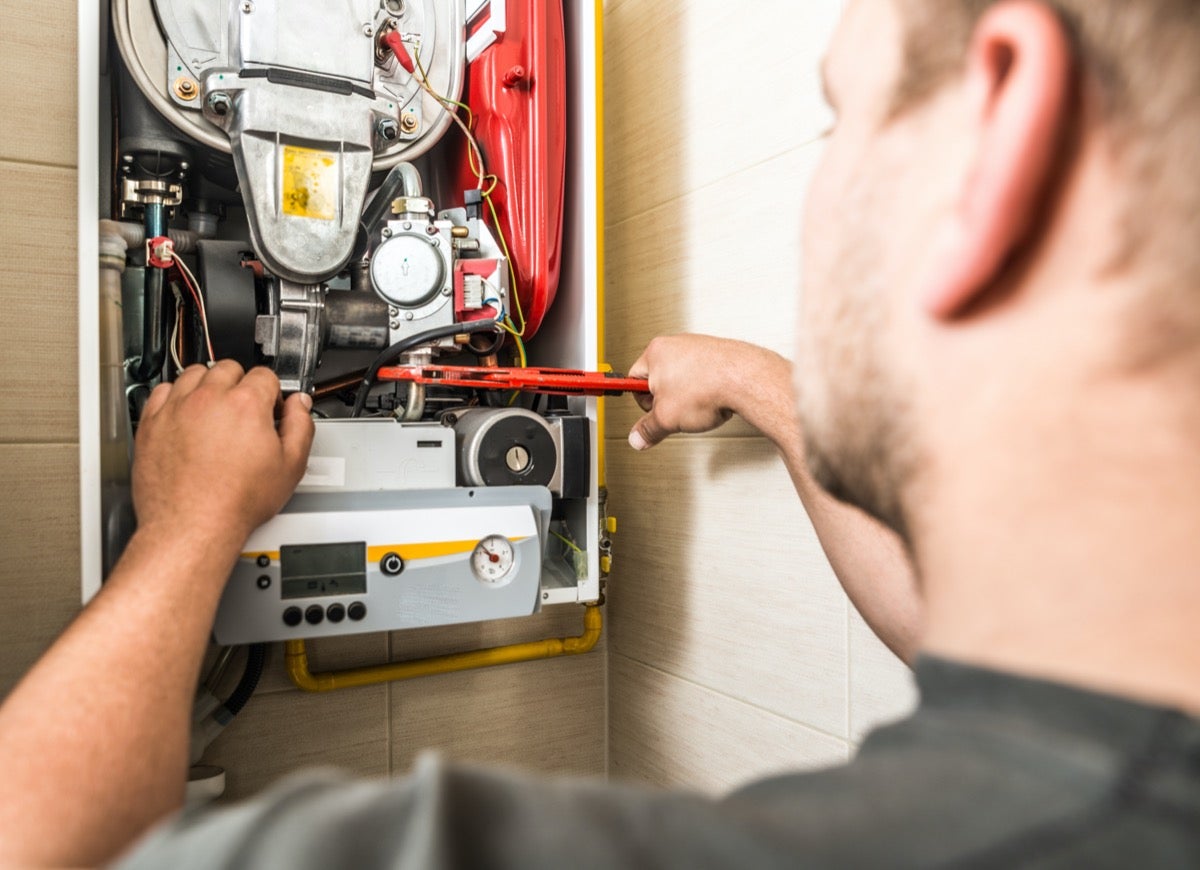We may earn revenue from the products available on this page and participate in affiliate programs. Learn More ›
What Is Carbon Footprint?

The term “carbon footprint” came into vogue in the mid-‘90s, based on research by William E. Rees and Mathis Wackernagel. It measures tons of greenhouse gas emissions per year, reported in CO2-equivalent units. Essentially, your carbon footprint is the total amount of greenhouse gases generated by your actions, including home energy usage, transportation, and consumption of food and consumer goods. According to the Nature Conservancy, the average American’s annual carbon footprint is 16 tons of carbon-equivalent emissions, among the highest rates in the world. Globally, the average per person is approximately 4 tons. To have the best chance of avoiding a devastating rise in global temperatures, the Nature Conservancy says the average global carbon footprint needs to drop below 2 tons per year by 2050.
Calculate Your Impact

Knowledge is power, as the saying goes, so the best way to figure out how to reduce your carbon footprint is to actually calculate it. Fortunately, there are free online tools to help you determine exactly how much you and your household are contributing to greenhouse gas emissions. Here are just a few sources for these online tools: the U.S. Environmental Protection Agency; The Nature Conservancy; Carbon Footprint.
Audit Your Energy Use

Hire a professional, contact your local utility company or perform a DIY home energy audit to assess and improve your home energy usage. The U.S. Department of Energy has a handy self-assessment that you can use to determine where you can conserve energy in your home.
Upgrade Your AC

Some 20 percent of Americans have inefficient HVAC systems that cost an extra $882 annually on average to cool their homes. This is nearly four times as much as more efficient systems in similar homes, according to an analysis of energy data conducted by Sense, a leading smart home energy company. The study found that the 20 percent of homes with the highest cooling use account for 45 percent of all cooling consumption nationwide. Updating these less-efficient homes could save 8 percent of U.S. residential electricity usage overall, and eliminate nearly 52 tons of CO2 emissions annually.
Lower Your Cooling Load

You also can help your air conditioner work less by implementing some changes to reduce the cooling load on your home, including planting shade trees and shrubs, closing draperies or window shades on the sunny side of your house during the day, and using whole-house fans or portable fans to increase ventilation. You can also install thermal-efficient windows and doors, and consider reflective, cooling roofing materials when you replace your roof.
Add Insulation & Seal Leaks

Improve the performance of your cooling and heating system by adding insulation in your ceiling, walls, around ductwork, and around doors and windows. Insulation reduces the exchange of heat, so that less cool air escapes your house in the summer, and less warm air escapes during the winter. The EPA estimates that homeowners can save an average of 15 percent on heating and cooling costs—or an average of 11 percent on total energy costs—by air sealing their homes and adding insulation in attics and floors over crawl spaces and basements.
Related: 9 Energy-Saving Home Upgrades That Pay for Themselves
Program It

Don’t cool or heat when you don’t need to. Installing a programmable thermostat can save the average homeowner about $180 annually in energy costs, according to the U.S. Energy Star program.
Tune Up Your Heating System

Improve the efficiency of your heating system by changing your air filters frequently, making sure the system has proper airflow, and by eliminating any leaks and insulating ductwork. If your furnace or boiler is more than 15 years old, consider replacing it with an Energy Star-certified unit: An Energy Star furnace is 15 percent more efficient than a conventional furnace, and an Energy Star boiler is 5 percent more efficient than a new standard model.
Beware of ‘Vampires’

All of those electronic devices—televisions, computers, printers, mobile phone chargers, microwaves, and the like—that you leave plugged in are still pulling energy out of the wall, even when they are in standby mode. According to a report from the National Resources Defense Council, Americans spend about $19 billion per year in energy costs, or anywhere from $165 to $440 per household, depending on energy rates and location. Unplug your devices when not in use and you may save up to 20 percent on your monthly energy bills.
Eat Healthier

Eating less meat—and more fruits and vegetables—can have a major impact on reducing your carbon footprint. A study by the University of Chicago found that the average American diet derives 28 percent of its calories from meat, which in turn “requires the production of an extra ton and a half of carbon dioxide-equivalent, in the form of actual carbon dioxide as well as methane and other greenhouse gases compared to a strictly vegetarian diet.”
Eat Locally

Transporting food from across the country—or across oceans—uses a tremendous amount of fossil fuel for transportation and cooling to keep foods from spoiling. Purchase locally grown foods whenever possible; consider joining a Community Supported Agriculture (CSA) co-op to purchase local, seasonal food directly from a farmer. Consider planting a backyard or container garden to grow your own fresh vegetables and herbs, and compost your food waste and use it in your own garden.
Switch to LEDs

LED bulbs use an estimated 75 to 90 percent less energy for the same amount of light than traditional incandescent bulbs, and also last 25 times longer. According to the U.S. Department of Energy, widespread household use of LEDs by 2027 could save the equivalent annual electrical output of 44 large electric power plants (1000 megawatts each), or more than $30 billion at today’s electricity prices.
Drive Less

Leave your car at home and take public transportation, ride a bike or walk to where you need to go. According to the American Public Transportation Association, transportation accounts for more than 30 percent of U.S. carbon dioxide emissions. The APTA reports that in 2019, public transportation in the United States saved approximately 1.4 billion gallons of gasoline and about 1.5 million tons of carbon dioxide, but notes that only 14 million Americans use public transportation daily, while 88 percent of all trips in the United States are made by car.
Don’t Buy New

Avoid buying “fast fashion”—those trendy, cheap clothing items that are in style one day and out the next—The average American disposes of about 80 pounds of clothing every year, and an estimated 85 percent of that textile waste ends up in landfills. Instead, buy vintage clothing at thrift stores or consignment shops, and while you’re at it, purchase household goods such as furniture, home décor and tabletop items there, too.
Wash & Dry Smarter

Americans used 10 billion kilowatt-hours washing laundry at home last year, and 60 billion kilowatt-hours drying it. To cut carbon here, consider an Energy Star-certified laundry room: New Energy Star washers use about 25 percent less energy than conventional models, and Energy Star dryers use 20 percent less energy. Save more energy by washing your clothes in cold water, only wash full loads, and use the automatic water-saving cycle when you can. Ditch the dryer for the clothesline. Not only will you save energy, but your laundry will smell amazing and fresh.
Consider Fewer Children

Having one less child can have a big impact on the planet. A 2017 study published in the scientific journal Environmental Research Letters
found that the annual impact of having a child globally averages 58.6 tons of emissions. In the U.S., the annual impact of a child is almost 120 tons.

Everything You Need for a Lush and Healthy Lawn
Keeping your grass green and your plants thriving doesn’t just take a green thumb—it starts with the right tools and supplies.

